Vehicle Maintenance Log Samples
-
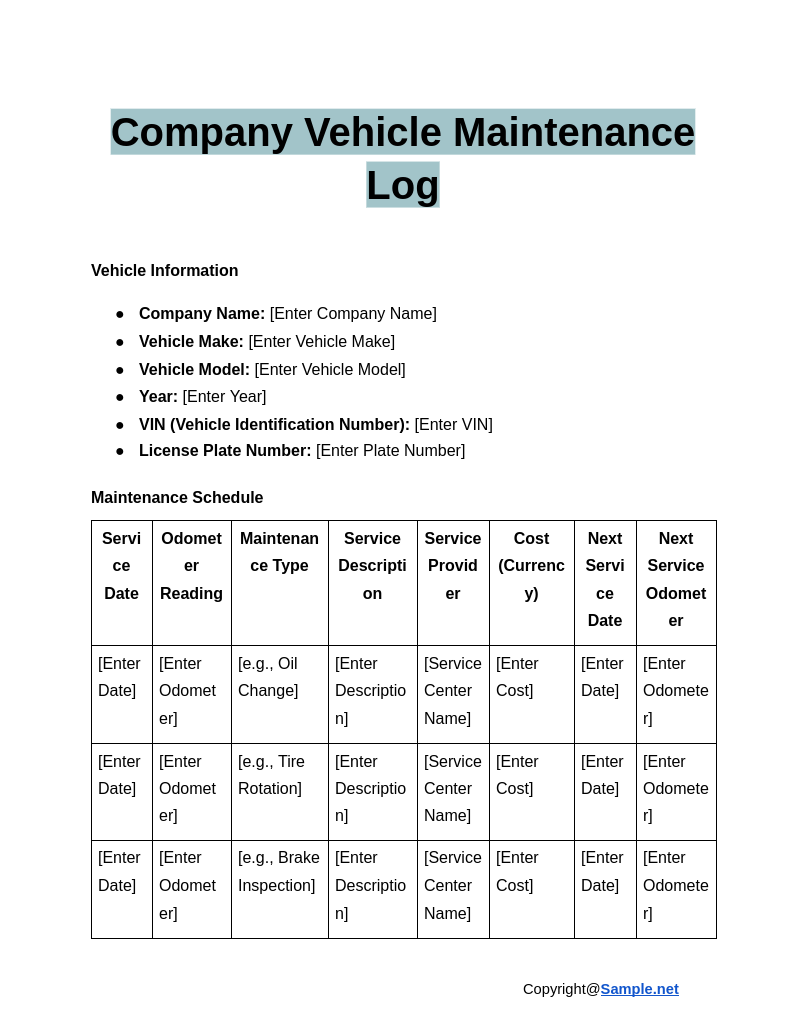
Company Vehicle Maintenance Log
download now -

Vehicle Fuel Maintenance Log
download now -
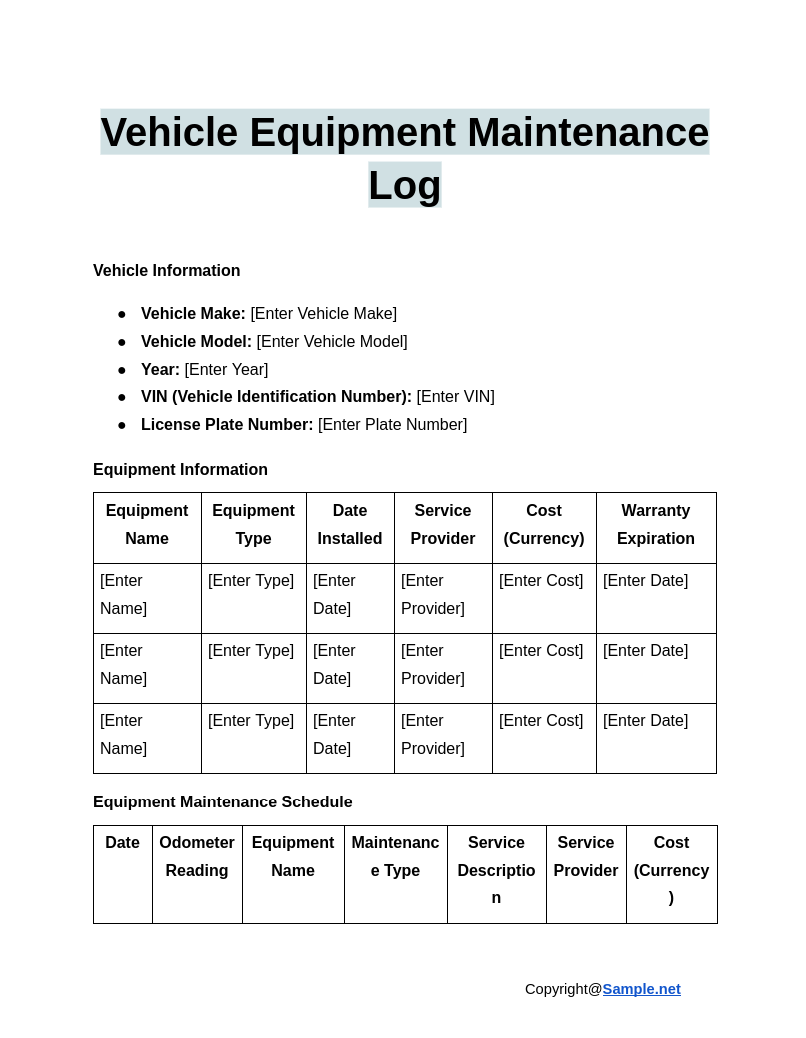
Vehicle Equipment Maintenance Log
download now -
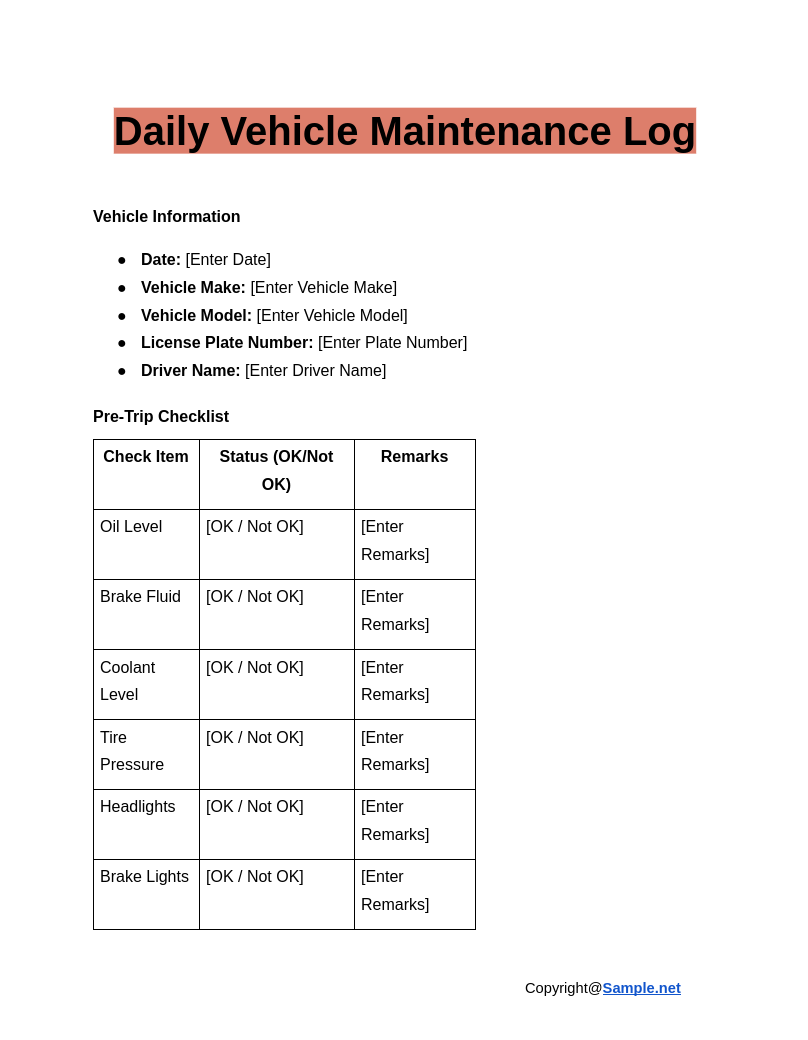
Daily Vehicle Maintenance Log
download now -
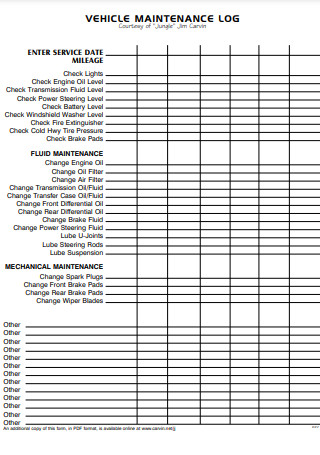
Vehicle Maintenance Log
download now -
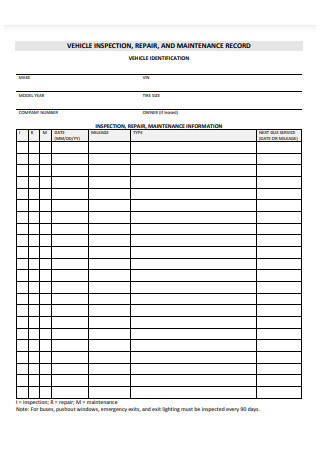
Vehicle Maintenance Record
download now -
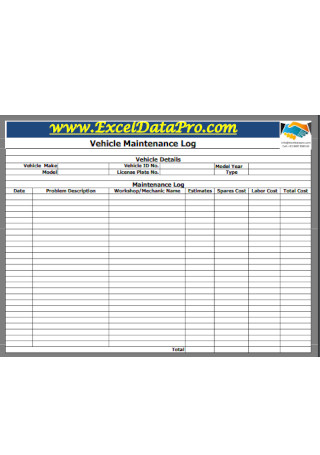
Vehicle Maintenance Log Format
download now -
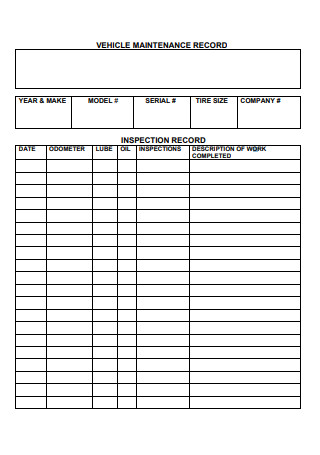
Vehicle Maintenance Record Sample
download now -
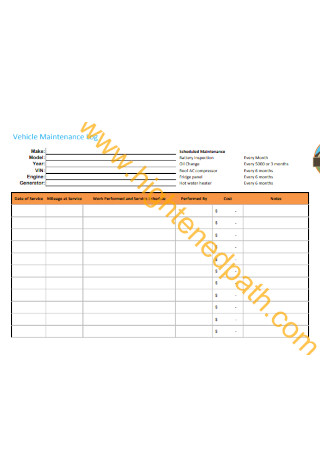
Rental Vehicle Maintenance Log
download now -
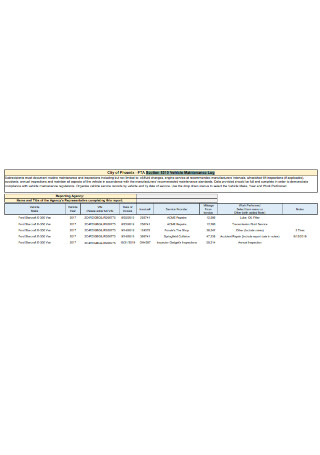
Section 5310 Vehicle Maintenance Log
download now -
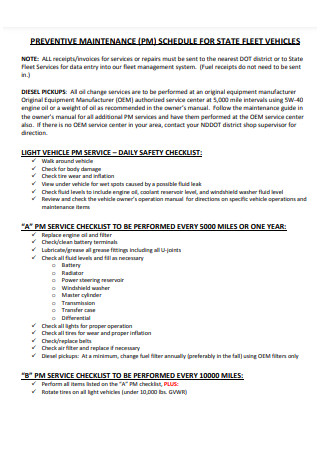
Preventive Maintenance Schedule
download now -
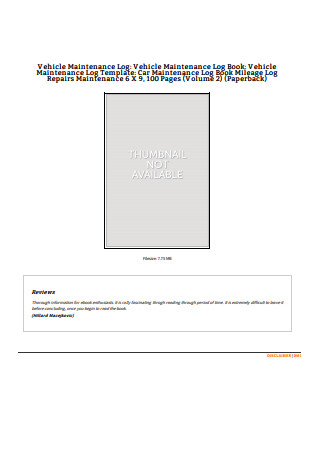
Vehicle Maintenance Log Guide
download now -
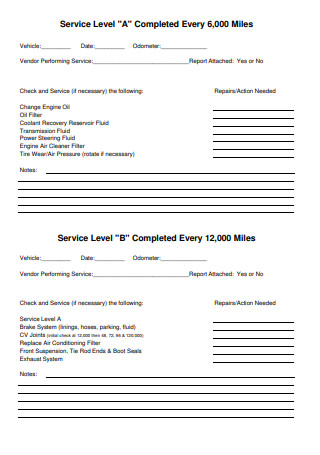
Consolidated Vehicle Maintenance Plan
download now -
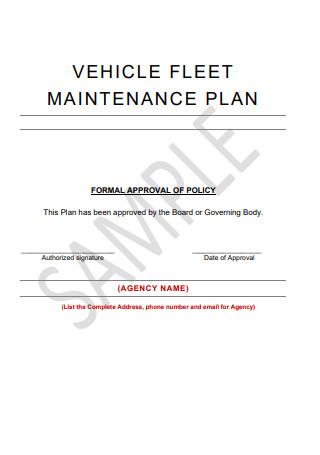
Sample Vehicle Fleet Maintenance Plan
download now -
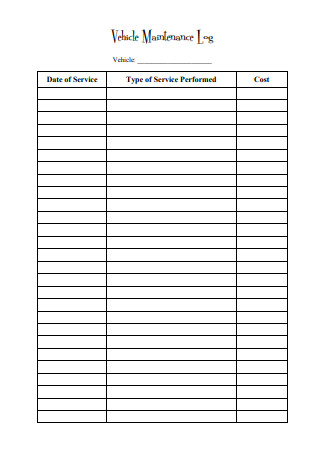
Simple Vehicle Maintenance Log
download now -
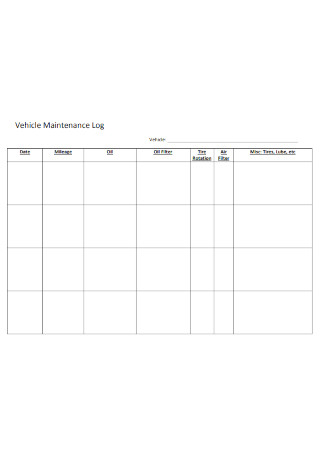
Vehicle Maintenance Log Template
download now -
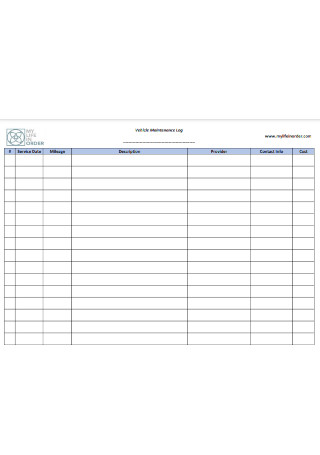
Sample Vehicle Maintenance Log
download now -
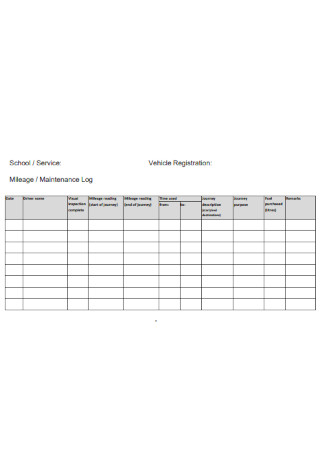
Vehicle Journey Log
download now -
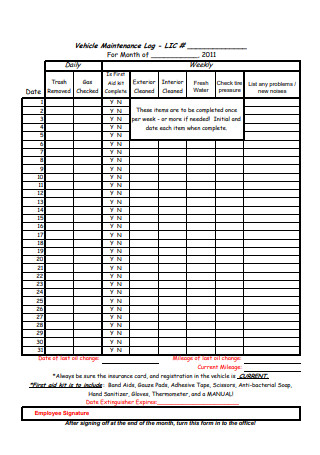
Vehicle Maintenance Log Sheet
download now -
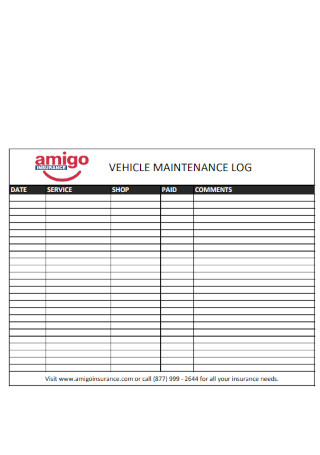
Insurance Vehicle Maintenance Log
download now -
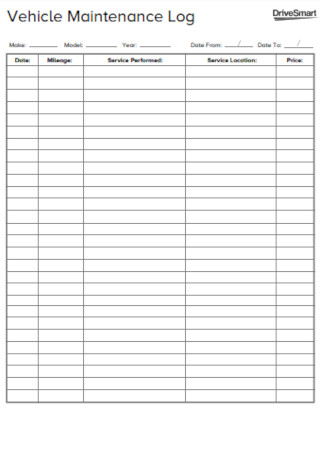
Smart Vehicle Maintenance Log
download now -
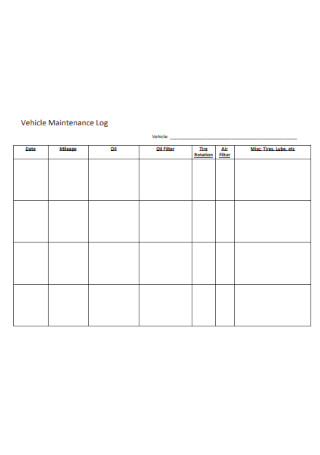
Printable Vehicle Maintenance Log
download now -
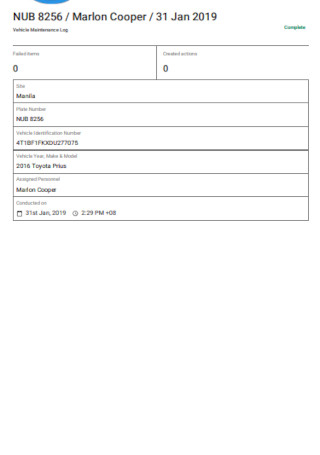
Vehicle Maintenance Log Report
download now -
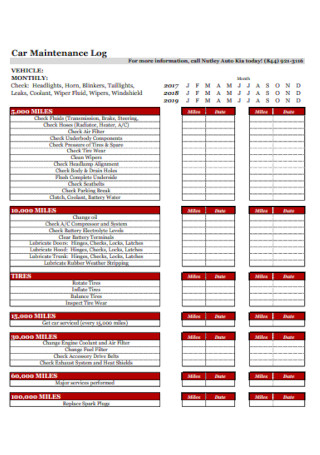
Car Maintenance Log
download now -
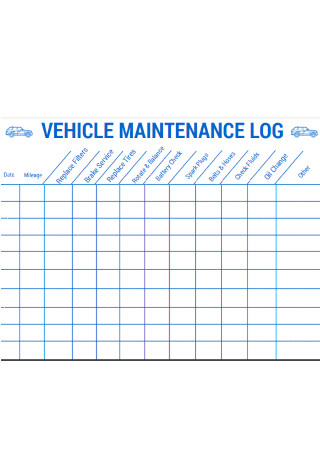
Vehicle Maintenance Log in PDF
download now
FREE Vehicle Maintenance Log s to Download
Vehicle Maintenance Log Format
Vehicle Maintenance Log Samples
What is a Vehicle Maintenance Log?
Purposes of a Vehicle Maintenance Log
How to Create a Vehicle Maintenance Log
FAQS
How do I create a Vehicle Maintenance Log?
What details should be included in a Vehicle Maintenance Log?
How does a Vehicle Maintenance Log improve vehicle performance?
How can fleet managers benefit from Vehicle Maintenance Logs?
Can I automate a Vehicle Maintenance Log for multiple vehicles?
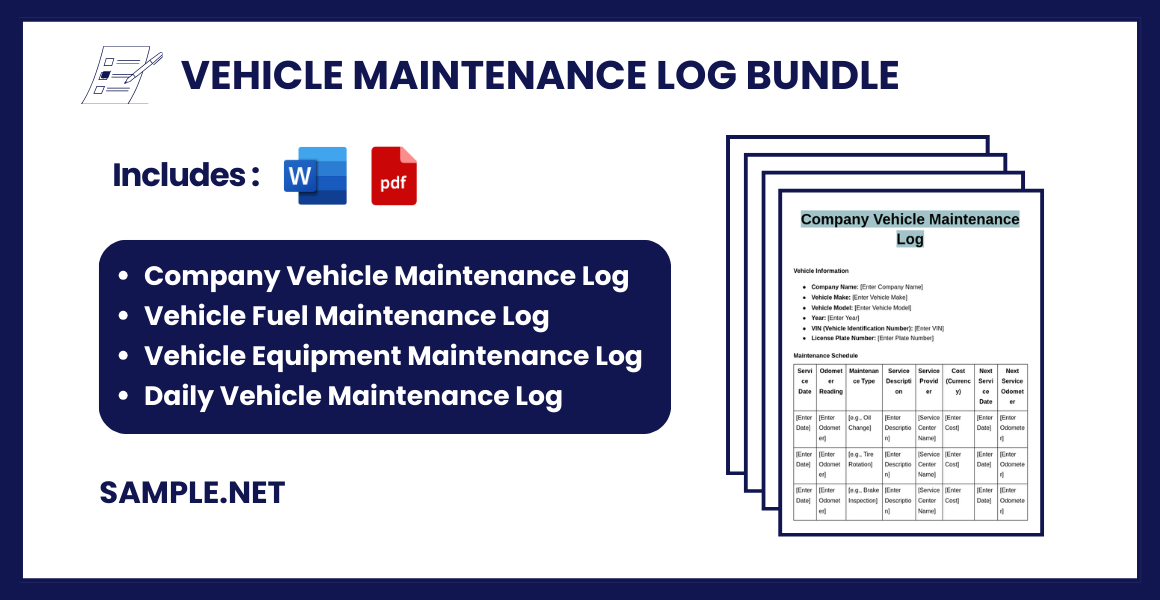
Download Vehicle Maintenance Log Bundle
Vehicle Maintenance Log Format
1. Vehicle Information
- Vehicle Make: [Enter Vehicle Make]
- Vehicle Model: [Enter Vehicle Model]
- Year: [Enter Year]
- VIN (Vehicle Identification Number): [Enter VIN]
- License Plate Number: [Enter Plate Number]
- Odometer Reading (Initial): [Enter Odometer Reading]
2. Owner/Driver Information
- Owner Name: [Enter Owner Name]
- Driver Name: [Enter Driver Name]
- Contact Number: [Enter Contact Number]
- Email Address: [Enter Email Address]
3. Maintenance Schedule
| Service Date | Odometer Reading | Maintenance Type | Service Description | Service Provider | Cost (Currency) | Next Service Date | Next Service Odometer |
|---|---|---|---|---|---|---|---|
| [Enter Date] | [Enter Odometer] | [e.g., Oil Change] | [Enter Description] | [Service Center Name] | [Enter Cost] | [Enter Date] | [Enter Odometer] |
| [Enter Date] | [Enter Odometer] | [e.g., Tire Rotation] | [Enter Description] | [Service Center Name] | [Enter Cost] | [Enter Date] | [Enter Odometer] |
| [Enter Date] | [Enter Odometer] | [e.g., Brake Inspection] | [Enter Description] | [Service Center Name] | [Enter Cost] | [Enter Date] | [Enter Odometer] |
4. Repair History
| Repair Date | Odometer Reading | Issue Description | Repair Work Done | Repair Center | Parts Replaced | Cost (Currency) |
|---|---|---|---|---|---|---|
| [Enter Date] | [Enter Odometer] | [Describe Issue] | [Describe Repair] | [Repair Center Name] | [List of Parts] | [Enter Cost] |
| [Enter Date] | [Enter Odometer] | [Describe Issue] | [Describe Repair] | [Repair Center Name] | [List of Parts] | [Enter Cost] |
| [Enter Date] | [Enter Odometer] | [Describe Issue] | [Describe Repair] | [Repair Center Name] | [List of Parts] | [Enter Cost] |
5. Fuel Log
| Date | Odometer Reading | Fuel Quantity (Liters/Gallons) | Fuel Cost (Currency) | Fuel Provider | Fuel Efficiency (MPG/KMPL) |
|---|---|---|---|---|---|
| [Enter Date] | [Enter Odometer] | [Enter Quantity] | [Enter Cost] | [Fuel Station Name] | [Enter Efficiency] |
| [Enter Date] | [Enter Odometer] | [Enter Quantity] | [Enter Cost] | [Fuel Station Name] | [Enter Efficiency] |
| [Enter Date] | [Enter Odometer] | [Enter Quantity] | [Enter Cost] | [Fuel Station Name] | [Enter Efficiency] |
6. Inspection Log
| Inspection Date | Odometer Reading | Inspection Type | Inspector Name | Issues Found | Corrective Action Taken |
|---|---|---|---|---|---|
| [Enter Date] | [Enter Odometer] | [Enter Type] | [Enter Inspector Name] | [Describe Issues] | [Enter Corrective Action] |
| [Enter Date] | [Enter Odometer] | [Enter Type] | [Enter Inspector Name] | [Describe Issues] | [Enter Corrective Action] |
| [Enter Date] | [Enter Odometer] | [Enter Type] | [Enter Inspector Name] | [Describe Issues] | [Enter Corrective Action] |
7. Insurance & Registration Log
| Renewal Date | Registration Number | Insurance Provider | Insurance Policy Number | Expiration Date | Cost (Currency) |
|---|---|---|---|---|---|
| [Enter Date] | [Enter Registration #] | [Enter Provider] | [Enter Policy Number] | [Enter Expiration] | [Enter Cost] |
| [Enter Date] | [Enter Registration #] | [Enter Provider] | [Enter Policy Number] | [Enter Expiration] | [Enter Cost] |
8. Parts Replacement Log
| Date | Odometer Reading | Part Replaced | Reason for Replacement | Service Provider | Cost (Currency) |
|---|---|---|---|---|---|
| [Enter Date] | [Enter Odometer] | [Enter Part Name] | [Enter Reason] | [Enter Service Center] | [Enter Cost] |
| [Enter Date] | [Enter Odometer] | [Enter Part Name] | [Enter Reason] | [Enter Service Center] | [Enter Cost] |
| [Enter Date] | [Enter Odometer] | [Enter Part Name] | [Enter Reason] | [Enter Service Center] | [Enter Cost] |
9. Notes and Additional Comments
- Date: [Enter Date]
- Comments/Notes: [Enter Any Additional Notes About Maintenance, Repairs, or Observations]
What is a Vehicle Maintenance Log?
A Vehicle Maintenance Log is a record-keeping document that tracks the repair, service, inspection, and maintenance history of a vehicle. It includes details such as service dates, type of maintenance performed, costs incurred, and parts replaced. This log can be maintained manually or digitally, often using spreadsheets, mobile apps, or fleet management software. It serves as a valuable document for personal car owners, fleet managers, and businesses that rely on transportation for daily operations. You can also see more on Vehicle Maintenance Checklist.
Purposes of a Vehicle Maintenance Log
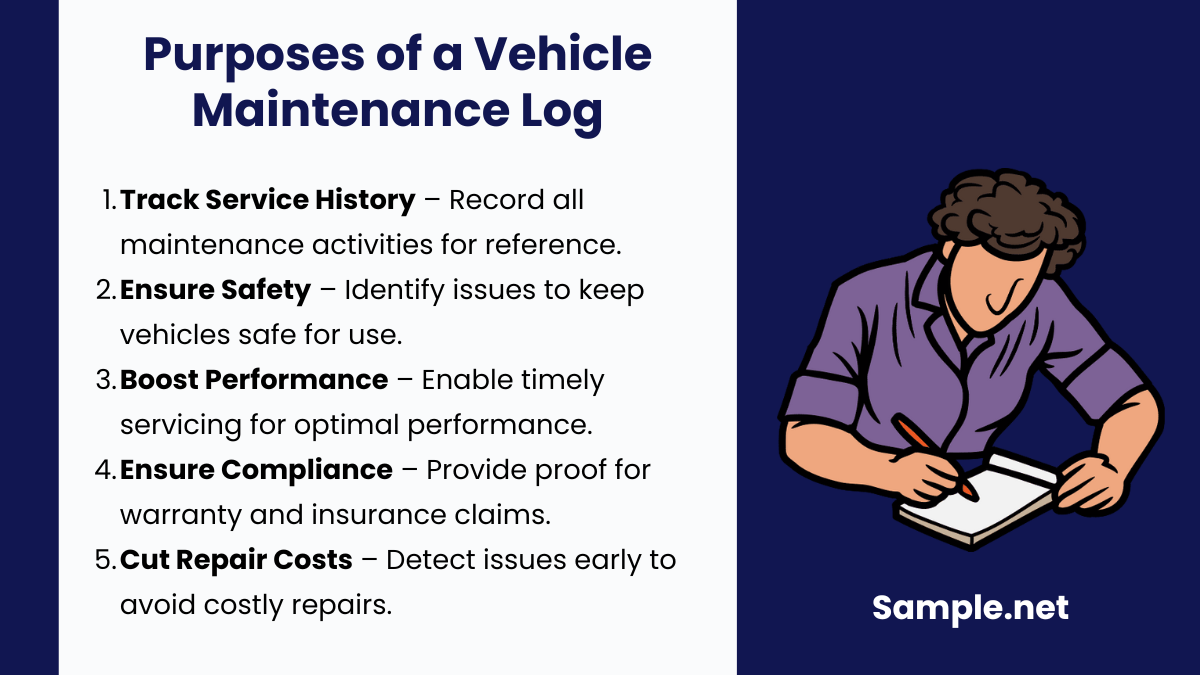
1. Track Vehicle Service History
A vehicle maintenance log provides a detailed record of all maintenance activities, from oil changes to tire replacements. It allows vehicle owners and fleet managers to track the service history of each vehicle.
2. Ensure Road Safety
Regularly logging maintenance activities helps detect issues like worn-out brakes or faulty tires. This ensures vehicles remain safe for drivers and passengers, reducing accident risks. You can also see more on Client Log.
3. Improve Vehicle Performance
Consistent maintenance logs enable timely servicing, which improves a vehicle’s performance. By following the recommended maintenance schedule, vehicles can run efficiently and avoid mechanical breakdowns.
4. Compliance with Legal and Warranty Requirements
Many warranty and insurance claims require proof of regular maintenance. A maintenance log serves as documented proof that the vehicle was maintained according to manufacturer guidelines. You can also see more on Time Logs.
5. Reduce Long-Term Repair Costs
Documenting maintenance activities helps identify recurring issues or patterns. Early detection and resolution of minor issues prevent costly repairs, extending the life of the vehicle and saving money in the long run.
How to Create a Vehicle Maintenance Log
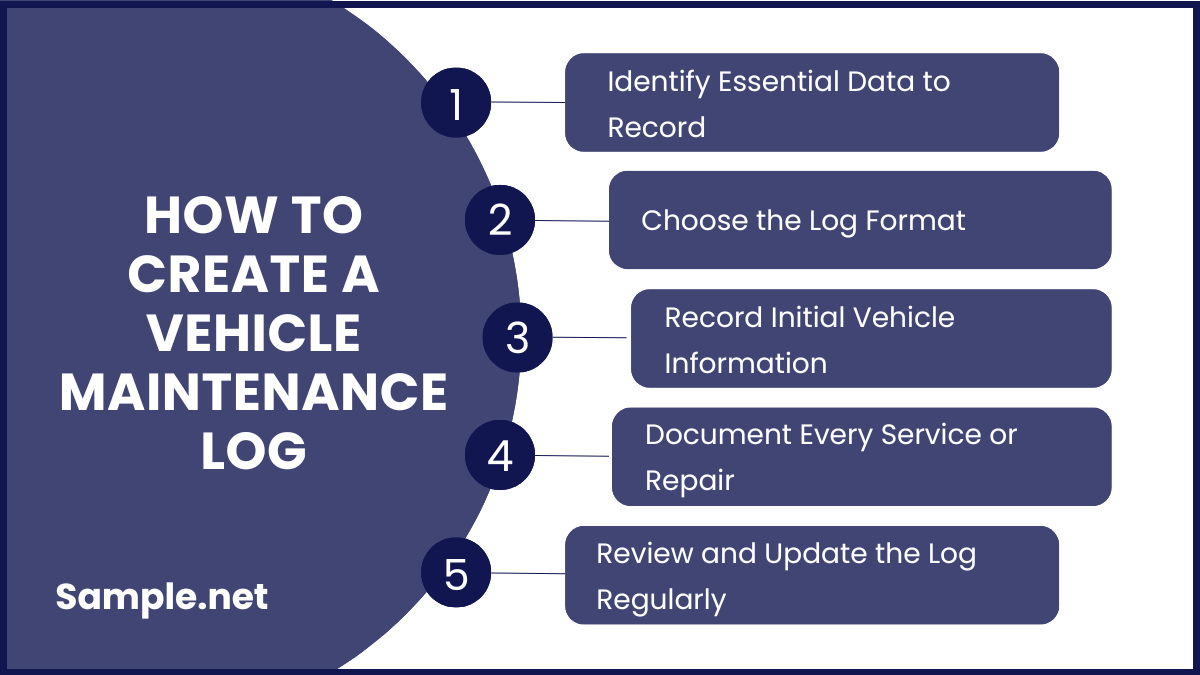
Step 1: Identify Essential Data to Record
Decide which details you need to track in your log. This may include the service date, type of service, mileage, and service provider. If you have a fleet of vehicles, ensure each log tracks the specific vehicle details like make, model, and VIN (Vehicle Identification Number). Customizing the information based on your needs makes the log more effective. You can also see more on Training Log.
Step 2: Choose the Log Format
Decide whether to use a paper-based log, a spreadsheet, or fleet management software. Digital tools are more accessible, allowing for cloud storage and automated alerts for upcoming maintenance. Paper-based logs are cheaper but require manual updates. Choose the format that fits your needs.
Step 3: Record Initial Vehicle Information
Start your log by entering essential vehicle information, including the make, model, year, and VIN. This ensures the log is unique to that vehicle. For fleet management, create separate log entries for each vehicle to avoid confusion. Include the odometer reading to track mileage from the beginning. You can also see more on Donation Logs.
Step 4: Document Every Service or Repair
Each time maintenance occurs, record the service details. Include the date, mileage, type of service, and cost. This information ensures you have a complete service history. It is also helpful when submitting warranty claims or when you plan to sell the vehicle.
Step 5: Review and Update the Log Regularly
Keep your log up-to-date after every maintenance activity. Periodically review the log to identify patterns, upcoming maintenance, and parts that frequently fail. Regular updates ensure timely reminders and help maintain your vehicle’s health. For fleet managers, scheduling automatic reminders for fleet maintenance is essential. You can also see more on Tracking Logs.
FAQS
How do I create a Vehicle Maintenance Log?
You can create a log using a physical notebook, Excel spreadsheet, or a digital mobile app. Record information like service dates, repairs, costs, and mileage.
What details should be included in a Vehicle Maintenance Log?
The log should contain the date of service, description of work done, parts replaced, service provider details, mileage, and total cost of the service. You can also see more on Business Log.
How does a Vehicle Maintenance Log improve vehicle performance?
A Vehicle Maintenance Log tracks essential services like oil changes, tire rotations, and part replacements. Timely services reduce wear and tear, improve engine performance, and ensure optimal fuel efficiency. Regular tracking also helps identify early signs of issues, allowing for preventive action to avoid costly repairs later.
How can fleet managers benefit from Vehicle Maintenance Logs?
Fleet managers use logs to track the health of multiple vehicles. These logs facilitate preventive maintenance, compliance with regulatory standards, and cost management. Logs also help fleet managers reduce downtime, improve operational efficiency, and ensure the fleet remains roadworthy. You can also see more on Equipment Maintenance Log Sheet.
Can I automate a Vehicle Maintenance Log for multiple vehicles?
Yes, automation is possible with fleet management software like Fleetio or AUTOsist. These tools track each vehicle’s health, send maintenance reminders, and offer custom reports. Automation ensures that no vehicle in the fleet misses scheduled servicing, reducing downtime and increasing operational efficiency.
